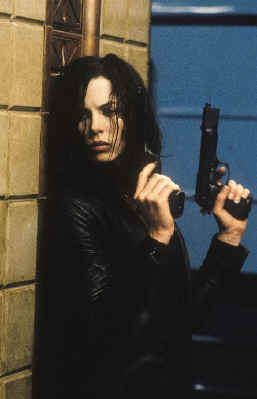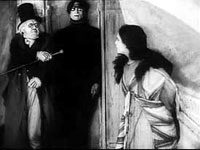The Gothic Film: From Classic to "Blockbuster"
|
Heroine
|
The Gothic Heroine
"The contemporary gothic heroine moves from the role of victim to the role of collaborator, a move that frees her from the constraints of her culture, and redeems the monster, instead of merely defeating him" (Harbin)
In her role as the central female figure, the gothic heroine has gone from the dependent, innocent victim in The Cabinet of Dr. Caligari (1919), to the dependent, "masculine" figure in Underworld (2003). With the changing and developing beliefs about and from women during the twentieth century, the figure of the female has become more complex, only to, in turn, simplify the genre of "gothic film".
 Through
numerous women's and feminist movements, the image of the gothic
heroine has followed society's progression with and development
of women's rights. In the early twentieth century, the heroine
of gothic film was a victim, as women still did not have full
rights, recognition, or freedom during this time. With the new
millennium, women are individuals in society who are no longer
stuck in the home, but are part of the working, real world. As
film narratives "are ways societies communicate to their
members about some of the important things in life" (Berger
159), the gothic heroine has changed to include qualities of the
villain and hero.
Through
numerous women's and feminist movements, the image of the gothic
heroine has followed society's progression with and development
of women's rights. In the early twentieth century, the heroine
of gothic film was a victim, as women still did not have full
rights, recognition, or freedom during this time. With the new
millennium, women are individuals in society who are no longer
stuck in the home, but are part of the working, real world. As
film narratives "are ways societies communicate to their
members about some of the important things in life" (Berger
159), the gothic heroine has changed to include qualities of the
villain and hero.
From victim to collaborator, the gothic heroine has not only shed the constraints for her gender, but the constraints of the form of the gothic film genre.
Jelena Momirov

|
Disclaimer © 2003 - 2004 by class of SOSC 4319 at York University |
